Top 10 nutrition tips for peak performance
When it comes to cycling like a pro, diet may be as important as training. Dietitian Laura Tilt matches up 10 foods with their key benefits

Training, equipment and nutrition will all have an impact on your performance on a ride or in a race, but the importance of what you eat can sometimes be overlooked. Here we run through the top ten nutrition tips to get the most out of your training.
1. Oatmeal + cinnamon = improve endurance + insulin sensitivity
It’s no coincidence that the world’s best endurance athletes consume high-carb diets — countless studies show that a steady stream of carbohydrate is vital when it comes to keeping you moving for longer.
That said, your choice of carbs remains important — those that are digested slowly (e.g. oatmeal) drip-feed the muscles fuel, forcing the body to use a greater proportion of fat for fuel, which spares precious glycogen stores.
Five pre-ride breakfasts for cyclists
In a 2010 study from Loughborough University, oats won out against a high-carb sports drink in fuelling endurance performance in runners. According to lead researcher Professor Williams, porridge is the best thing to eat before endurance exercise.
Get more from your breakfast bowl by adding a teaspoon of cinnamon. This sweet spice helps improve insulin sensitivity and regulates blood glucose levels after eating.
Dial it in: Researchers from the University of Birmingham found a daily dose of 3g of cinnamon (about a teaspoon) was sufficient to improve blood glucose control among a group of healthy adults.
The latest race content, interviews, features, reviews and expert buying guides, direct to your inbox!
2. Honey + water = natural sports gel
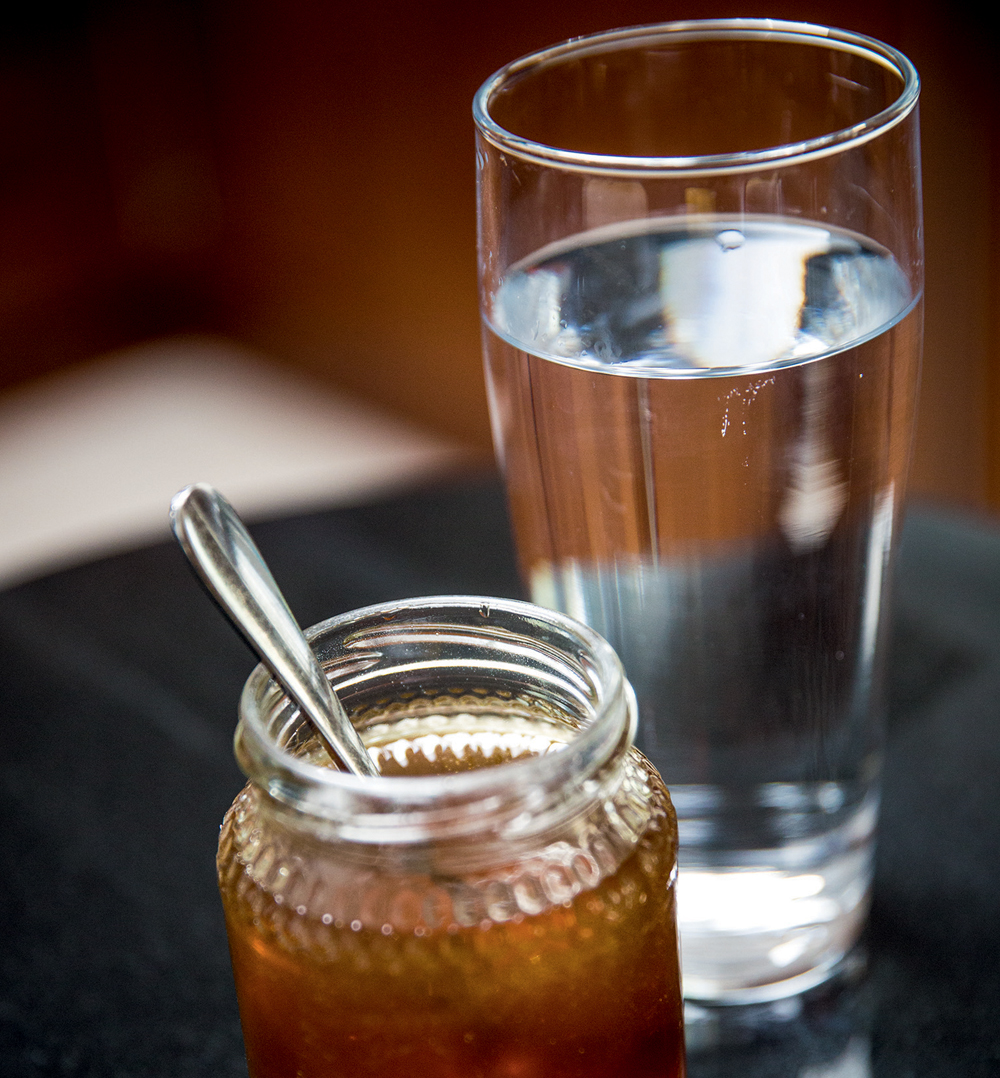
If you’re riding for longer than an hour, you need to replenish carbohydrates or face the dreaded bonk. Sports drinks are the go-to option to provide the recommended 30-60g of carbohydrate per hour, but there is a more natural (and cost-effective) route.
In a series of experiments assessing the ability of various carb sources to fuel endurance exercise, Memphis University researchers evaluated honey as a natural alternative to sports gels.
In a double blind, placebo-controlled study, nine trained male cyclists performed three 64km time trials consuming either a placebo gel, a dextrose gel, or honey mixed with 250ml water every 16km. Results showed the honey and dextrose gel were equally as good at improving performance as the placebo.
One of the benefits of honey is that it contains a mixture of sugars (fructose and glucose), which increases carbohydrate oxidation; the two sugars use different absorption pathways.
And that’s not all. Last year, researchers in physical education and sport sciences in Azad University evaluated the antioxidant effects of supplementing a 10-week treadmill training programme with honey (50g a day diluted in 200ml water).
After 10 weeks, the athletes receiving the honey had significantly lower levels of inflammatory markers and higher levels of anti-inflammatory compounds than the control group.
Dial it in: A tablespoon of honey contains 17g of carbohydrate. Two to three tablespoons per hour should be adequate to avoid hitting the wall. Squeeze your honey into the corner of plastic sandwich bags and tie the top, buy in pre-prepped honey sticks or mix with water.
3. Coffee + banana = pre-ride energy boost

For a natural pre-ride lift, look no further than your fruit bowl and espresso machine. With around 30g of carbohydrate per large fruit, bananas are nature’s portable cycling fuel.
The mid-glycaemic-index fruit raises blood sugar slowly at a steady rate, making it the ideal for sustaining endurance exercise. In one study from the University of Texas, bananas were as effective as Gatorade in fuelling TT performance in trained cyclists.
Get a dual lift by sipping a coffee. Since it’s removal from the WADA prohibited list in 2004, caffeine has become one of the most popular performance-boosting aids. Not only does it increase alertness, it reduces perception of fatigue, boosting performance by 1-5 per cent.
>>> Six simple steps to healthier eating
In a 2012 study from Bath University, researchers found coffee as effective as a caffeinated beverage in improving TT performance in trained male cyclists. Levels peak around 45-90 minutes after ingestion, so take a cup an hour before hitting the roads.
Dial it in: One banana = 30g of carbs. Coffee: performance benefits are evident at doses as low as 1-3g per kilogram of body weight — a single espresso contains around 80mg of caffeine.
4. Whey protein + soy milk = build stronger muscles

When it comes to muscle-building, whey protein stands head and shoulders above the competition. Apart from its rapid digestion (which means it reaches the muscle quickly) the secret component of whey is a group of proteins known as branched-chain amino acids — and in particular leucine.
According to Professor Stuart Phillips, leading protein researcher at McMaster University, leucine is the essential trigger for new muscle synthesis, which makes whey’s high proportion of leucine a muscle-building winner. In fact, gram for gram, whey is the best source of protein for new muscle synthesis, experts claim.
>>> Refuel with real food after cycling
To boost the benefits, blend whey protein with soy milk. Not only are liquid proteins more rapidly digested, research published in the Nutrition Journal found, though soy and whey both increased muscle mass, only soy prevented exercise-induced inflammation in male weightlifters.
Dial it in: One scoop of whey provides around 20g of protein and 2.5g of leucine, the same as a fillet of beef.
5. Pasta + tomatoes + watercress = replenish glycogen + reduce muscle damage

Carbohydrates are a key component of recovery meals. Failure to replace glycogen after a long ride will slash your ability to train hard in the next session. The type of carbohydrate doesn’t appear so important, as long as you get enough of it, and in good time.
>>> Top 10 time saving nutrition tricks
Pasta is a steadfast recovery friend, but if your choice of topping is cheese, it’s time for an upgrade. Greek researchers found lycopene (an antioxidant found in cooked tomatoes) reduced post-exercise muscle damage in trained athletes. Partner tomato sauce with watercress and you’ll benefit further. Gym-goers consuming 85g of watercress had less DNA damage after intense exercise than those in a control group.
Dial it in: One small bag of watercress = 100g. Blitz with a small handful of almonds, a clove of garlic and a small drizzle of olive oil for a DIY pesto, before stirring into pasta with canned tomatoes.
6. Salad + avocado = boost vitamin uptake
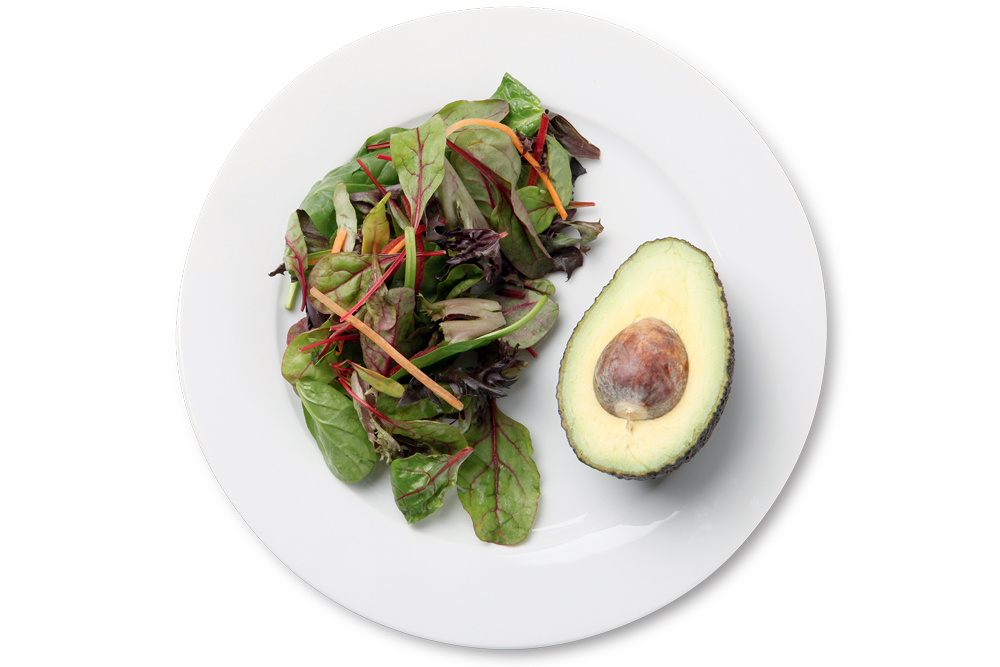
It’s not just the ratio of protein and carbs that are important for good cycling performance — a diet rich in vitamins and minerals can help offset the oxidative stress that comes as a by-product of intense exercise.
Boosting your body’s antioxidant defences by popping a vitamin pill isn’t the best choice. Studies indicate that high intakes of synthetic antioxidant supplements may actually hinder rather than help the body’s coping mechanism.
Far better to get the most from your meals. Eating plenty of brightly coloured fruit and vegetables is a good start, but it doesn’t end there. To give your body a helping hand, add a couple of slices of avocado to your salad or vegetables. The fats in the fruit will help your body absorb more vitamins and carotenoids — pigments in plants that act as powerful antioxidants.
>>> Can crash diets work for cyclists?
In one 2005 study, healthy volunteers eating 75g of avocado (around half a medium fruit) with a salad absorbed 13 times more beta carotene (antioxidant) than when eating the salad without fat. More recently, researchers from Ohio State University found avocado boosted the uptake of carotenoids from both tomato sauce and carrots.
Dial it in: Monounsaturated fats (found in olive oil and avocado) are the most effective. Try half an avocado or around a teaspoon of olive oil.
7. Beef + turmeric = fight fatigue + slash inflammation
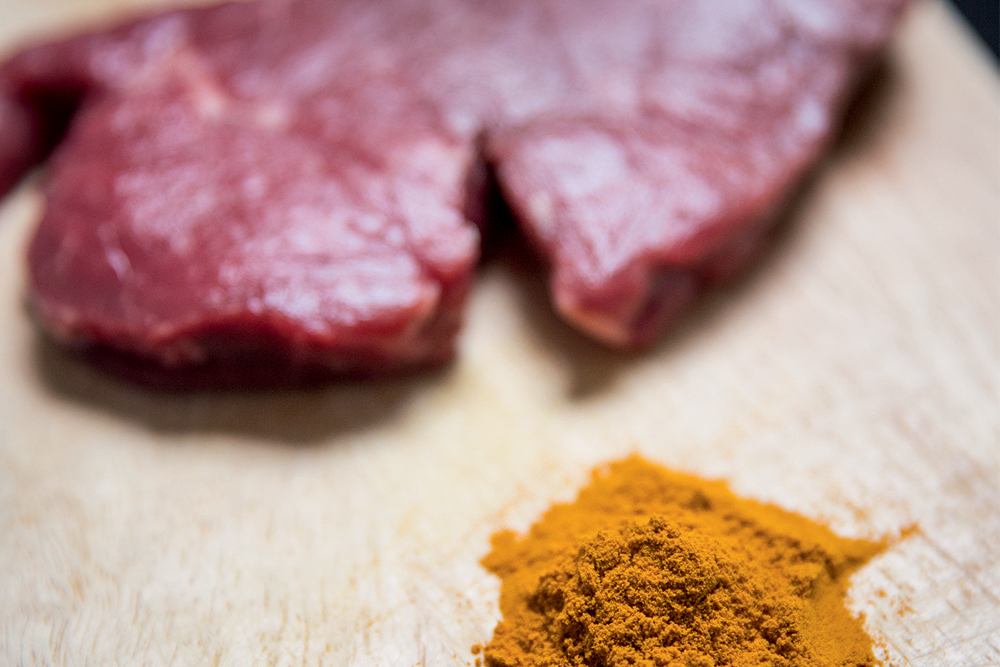
Iron is an essential component of the red blood cells that ferry oxygen around the body. Endurance exercise can increase iron requirements, as it produces more blood cells and vessels. In one study from the University of Wyoming, just six weeks of high-intensity cycle training was enough to reduce iron stores.
Since supplementation is not advisable in most people, getting a regular intake from food is important. Beef is one of the richest sources of iron, and one of the most readily absorbed. South Dakota State University researchers found eight weeks of dietary supplementation with lean beef (around 250g per week) significantly increased haematocrit levels (volume of red blood cells) in collegiate athletes.
>>> The importance of power-to-weight, and how to improve yours
As well as iron, beef is a good source of protein — McMaster University found rates of muscle growth were 50 per cent greater in men combining strength training with 6oz servings of beef.
Stir-fry with turmeric to soothe post-cycle inflammation. Last year, male runners receiving a daily supplement of curcumin (the active component of turmeric) before and after a 60-minute treadmill run experienced less oxidative stress and had greater concentrations of antioxidants in their blood.
Dial it in: An 8oz beefsteak provides around half the recommended daily intake of iron for men, and one-third for women.
8. Cereal + milk = maximise post-ride recovery
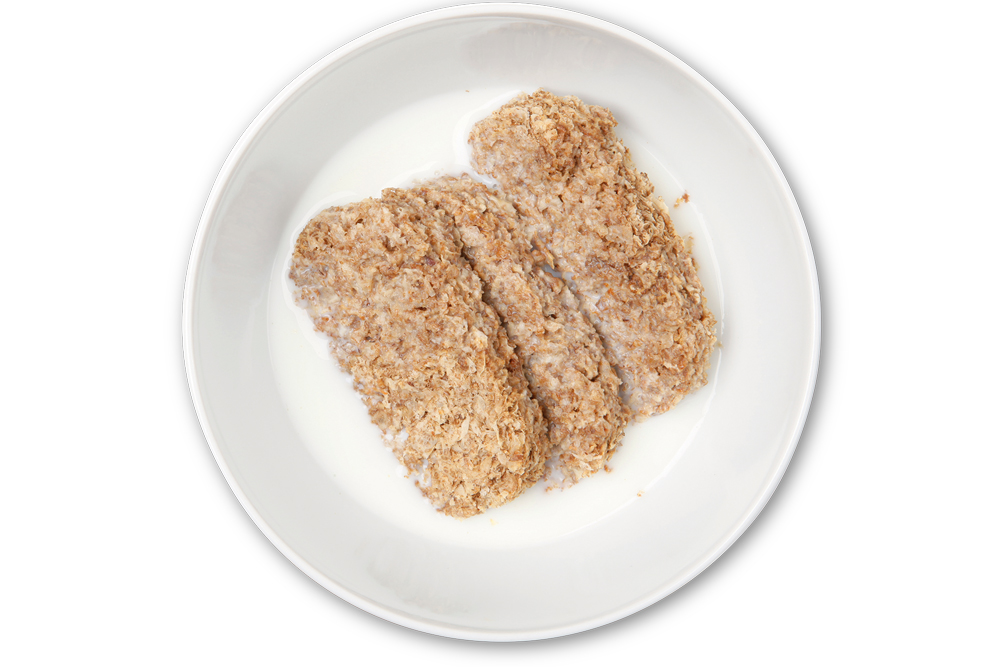
The speed and ease with which you can spoon down a recovery meal is key. After you stagger off the bike with legs like spaghetti, your motivation to cook will be low, so it’s worth having a few fast, fuss-free options up your sleeve to save you heading for a takeout.
Luckily the answer is as simple as popping open a box of breakfast cereal. Texan researchers comparing the post-exercise effects of consuming cereal with milk, versus a sports drink, in a group of trained cyclists found that the cereal was just as good as the sports drink at replenishing glycogen stores. As an added plus, the cereal also had a significant stimulatory effect on muscle synthesis, thanks to the proteins in the milk.
>>> Is milk a good rehydration option?
The cereal-plus-milk combo will also put you in prime position for your next ride. In one study from James Madison University, cyclists who consumed a carbohydrate and protein recovery meal rode for 13 per cent longer during a second ride than when consuming carbohydrate alone.
Dial it in: 100g of cereal contains around 75g of carbohydrate, hitting the 0.8-1g/kg of carbs to body weight recommended post-exercise. Consume with two-thirds of a pint of milk to aid recovery.
9. Cherry juice + Greek yoghurt = maintain muscle strength
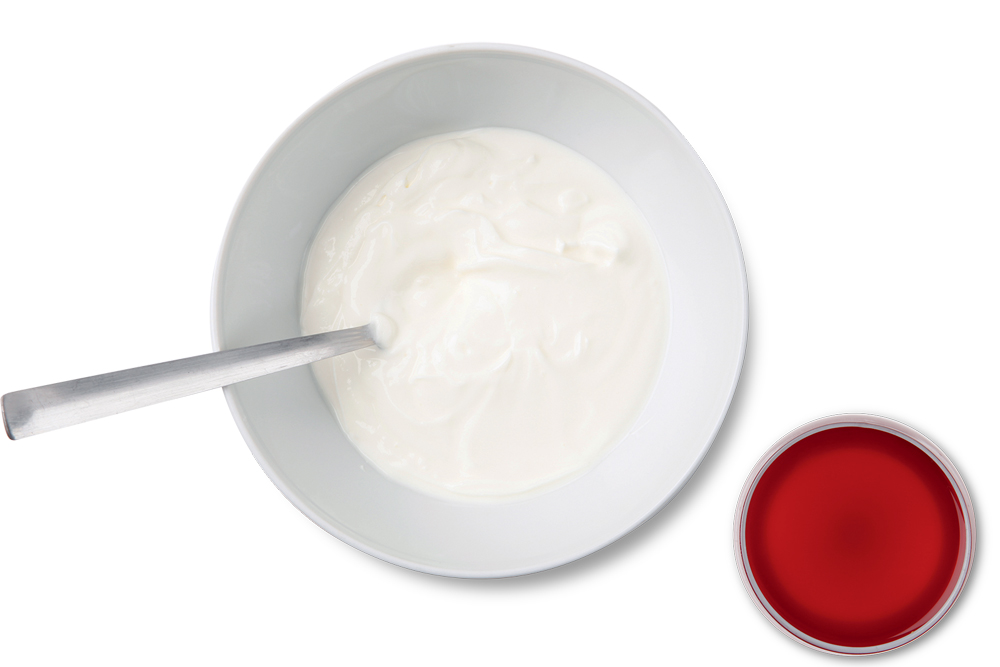
In a 2014 study from Northumbria University, researchers found a twice-daily, 30ml shot of tart cherry juice helped maintain muscle capacity in cyclists performing high-intensity exercise. After consuming the juice daily for five days, the cyclists performed a 109min trial. The cherry juice group maintaining better muscle function and less inflammation.
Scientists at University of Vermont showed college students drinking tart cherry juice twice daily preserved 18 per cent more muscle strength over four days of repeated eccentric exercise than a control group.
>>> Always hungry? Here are 5 reasons why
Consume cherry juice with yoghurt before bed. Greek yoghurt contains twice the protein of regular yoghurt and boasts a higher percentage of casein, a slow-digested protein, providing a steady release of amino acids.
Dial it in: 200g of Greek strained yoghurt provides 20g of protein. 30ml cherry juice per day preserves muscle strength.
10. Ginger + salmon = slash muscle soreness

What you eat after an intense workout can help diminish post-ride soreness.
Known for its anti-inflammatory properties, omega-3 (the long-chain fats in oily fish) have been shown to regulate and reduce muscle tenderness in the post-exercise period.
In a study from Urmia University, men undertaking a strength-training programme were randomised to receive 1.8g of omega-3 per day or a dummy supplement. The omega-3 group suffered less pain and a better range of motion in the 48 hours following the workout.
>>> Nutrition for cycling: 10 tips to get your food and drink dialled
For a muscle-soothing fix, try a salmon fillet with a ginger marinade. Researchers from Georgia University found raw and cooked ginger cut post-workout muscle pain by 25 per cent.
Dial it in: One salmon fillet = 2g of omega-3, while 2g of ginger is enough to make a difference — try fresh minced ginger mixed with garlic and soy for a speedy marinade.
This article first appeared in the May 7 edition of Cycling Weekly